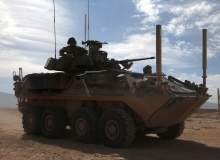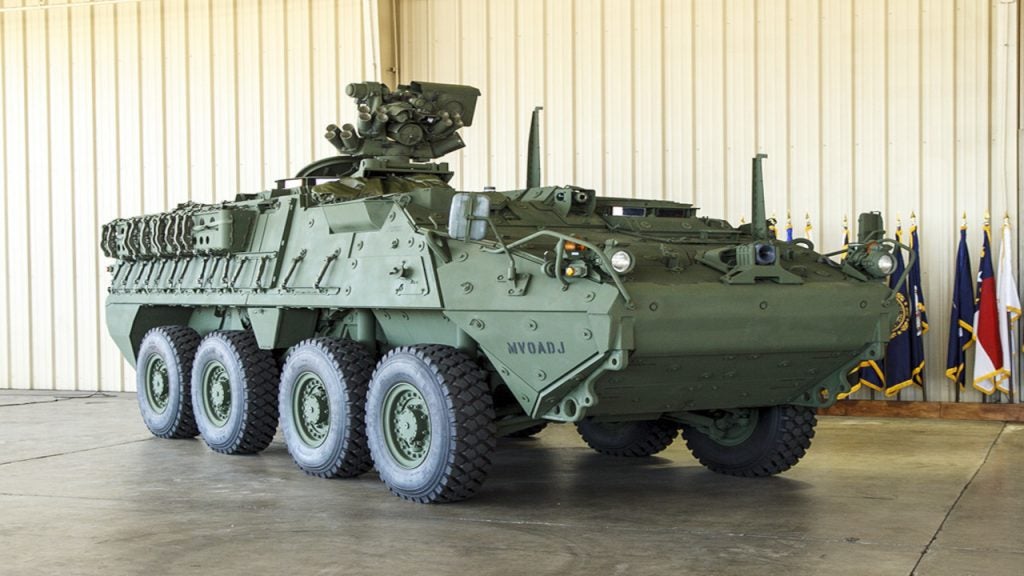

Under the Land 400 project, the Australian Defence Force (ADF) will acquire a new fleet of vehicles to replace its M113 and Australian Light Armoured Vehicle (ASLAV) vehicles. The goal: to enhance the mounted close combat capabilities of its land forces against emerging and future threats as part of a joint force.
Following the completion of the first phase of the programme – a Project Scoping Study – three discrete phases for Land 400 have been determined, with the request for tender (RfT) for Phase 2 released earlier this year. Now, with the RfT deadline (25 May) passed, industry contenders are lining up to show their wares and grab a piece of the A$10bn pie.
Acquiring capability
LAND 400 Phase 2 received First Pass Approval in February 2015, allowing for the RfT to be released to industry. This portion of the programme focuses on the enhancement of the ADF’s mounted combat reconnaissance capability through the acquisition of a Combat Reconnaissance Vehicle (CRV) to replace the ADF’s ASLAV fleet – which has seen extensive operational service in East Timor, Iraq and Afghanistan, and will reach the end of its service life around 2021.
The ADF has determined that obsolescence factors constraining the tactical employment of the current fleet and increasing the cost of ownership cannot be mitigated through upgrade, and so will aim to replace the fleet from 2020 to avoid a capability gap.
The Australian government is close to making a decision on its ambitious LAND 400 project.
How well do you really know your competitors?
Access the most comprehensive Company Profiles on the market, powered by GlobalData. Save hours of research. Gain competitive edge.

Thank you!
Your download email will arrive shortly
Not ready to buy yet? Download a free sample
We are confident about the unique quality of our Company Profiles. However, we want you to make the most beneficial decision for your business, so we offer a free sample that you can download by submitting the below form
By GlobalDataWith recent operations increasingly demonstrating the need for flexible and capable CRV vehicles, the ASLAV replacement will serve as the mainstay of the Australian Army’s future fleet. The ADF is seeking a ‘quantum jump’ in capability from the CRV, rather than a simple like-for-like replacement of the ASLAV. A total of 225 CRVs are being sought in variants to fulfil seven combat roles: reconnaissance and counter-reconnaissance (129), command and control (26), joint fires (8), surveillance (17), ambulance (15), repair (20) and recovery (10).
With a life of type for the capability to be 30 years, the ADF is seeking a military off-the-shelf (MOTS) vehicle that is already established in-service with a military force, which will require, at most, ‘minor’ modifications to deliver interoperability with existing ADF and allied assets. The vehicle will be sourced from an established production facility, with acquisition and support to be provided by a single contractor.
Boon for industry
High on the ADF’s requirement list is that prime contractors will be expected to maximise Australian industry content while ensuring an effective capability without detriment to the quality, interoperability, schedule or cost of the project.
Minister for Defence Kevin Andrews said of the opportunity for Australian industry on the programme: “The government’s broader policy settings, including our Industry Innovation and Competitiveness Agenda and Advanced Manufacturing Growth Centre, are focussed on building on our strengths and maximising opportunities for investment and job creation… Australian industry must continue to demonstrate that it can be competitive, and can be a vital, long-term contributor to supply chains and support strategies.”
Sub-contracting opportunities for Australian industry will include component and parts supply, integration of Australian communications, sensor and weapons systems, engineering and testing, facilities, and vehicle sustainment and logistics.
The contenders
In seeking an off-the-shelf solution for the CRV portion of the programme, the ADF has a number of options available, with vehicles including the General Dynamics Land Systems (GDLS)-Canada LAV-III (of which the ASLAV is an earlier variant) and General Dynamics European Land Systems-Mowag Piranha likely to be among the contenders; and Nexter’s VBCI, ARTEC’s Boxer, ST Kinetics’ Terrex, and Oto-Melara’s Freccia all currently in use with military forces.
Two teams have been quick to voice their intent to respond to the CRV RfT: a GDLS-Thales Australia team, and a BAE Systems-Patria team. Both teams have strong roots in the Australian defence industry, having worked with the ADF on major vehicle programmes.
GDLS and Thales Australia announced the signing of a memorandum of understanding for Land 400 Phase 2 in March 2015. Though the bid vehicle has not yet been specified by the team, the companies will build on their track record of working together on vehicle programmes – including Canada’s LAV III upgrade, the UK’s Foxhound and Scout SV programmes and Australia’s ASLAV Crew Procedural Trainer and electro-optics programme – to meet ADF requirements.
Additionally, both companies have strong presence in Australia, with GDLS having established GDLS-Australia in 2000 to support the delivery of the ASLAV wheeled armoured fighting vehicles. GDLS-Australia also supports the M1A1 Abrams and ASLAVs in the ADF fleet, and manufactures the LAV-25 turret for export markets, while Thales’ work with Bushmaster employs around 3,200 people across 35 sites Australia-wide.
Strong track record
BAE Systems and Patria announced in September 2014 that they will together offer the Patria 8×8 Armoured Modular Vehicle (AMV) to meet the ADF’s CRV requirements; a solution the team believes will improve the firepower, protection, mobility and digital communications of the ADF’s mounted close combat capability. The 30-32t combat weight vehicle is highly protected and can be armed with a 25mm cannon and anti-tank guided weapon.
Ian Smith, general manager of land systems and support at BAE Systems Australia, told Global Defence Technology that the Patria AMV was selected as the basis for the joint bid due to its track record and competitiveness in the market.
The US Army is seeking a new generation of lightweight armoured vehicle that can be carried by helicopter.
“The vehicle has been selected by seven countries worldwide, is combat proven, and feedback received from its use in Afghanistan has been excellent,” Smith said.
In the interests of meeting the MOTS-based solution requirement, Smith said that modifications to the vehicle will be kept to an absolute minimum in order to minimise risk for the customer.
“Our focus is currently on establishing how we are actually going to deliver that in Australia,” Smith said. “We are the largest defence company in Australia and therefore by definition we have the largest supply chain in Australia.
“We’re looking to leverage our strong military supply chain in the best way possible and create as much Australian capability as possible – the key for us is around the sustainability of the platform once it’s in service, so we’re focused on effective technology transfer and establishing the supply chain that will support the platform for the next 30 years.”
Phases three and four of LAND 400 will see the acquisition of an infantry fighting vehicle – currently provided by the M113 Armoured Personnel Carrier, a manoeuvre support vehicle and an integrated training vehicle. These portions of the programme will be confirmed under the Defence White Paper due to be released during 2015.







